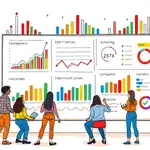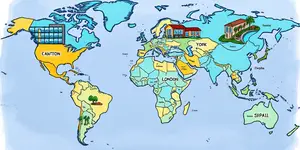
As 2025 unfolds, investors are witnessing a profound shift in capital allocation. Exchange-traded funds (ETFs) have become more than passive instruments; they are now strategic tools that reflect real-time sentiment and portfolio tilting. Recent data on net flows reveal a decisive move toward value-oriented strategies and active management, highlighting how market participants are seeking safety and adaptability amid uncertainty.
The first quarter of 2025 marked a historic shift from passive to active management. Active ETFs attracted $30.2 billion in net sales in Q1, nearly matching their total inflows over the past three years combined. For the first time ever, active ETF inflows of $9.9 billion outpaced passive ETF inflows of $9.4 billion in a single quarter, signaling growing confidence in professional portfolio managers to navigate rapid market rotations.
Investors are increasingly relying on ETFs for both tactical rotation and long-term exposure, with a pronounced emphasis on value equity strategies and defensive allocations.
After years of passive dominance, active ETFs have emerged as core building blocks for portfolios. Advisors and institutions appreciate active ETFs offer greater tactical flexibility, enabling swift repositioning during market turbulence. As a result, value-focused mandates are capturing a growing share of inflows.
Several interconnected factors have fueled the rotation toward value. April’s tariff turbulence inflicted nearly $4 billion in outflows from mutual funds, while ETFs attracted capital as investors sought safety. At the same time, rising volatility and shifting rate policy have emphasized strong balance sheets and reliable fundamentals, core attributes of value stocks.
To contextualize the magnitude of this rotation, the following table summarizes key data points from the first five months of 2025:
The data illustrate how ETFs have absorbed shifting capital flows, with active strategies and value exposure at the forefront of investor demand. The resilience of these flows during turbulent months underscores the growing reliance on ETFs as dynamic allocation vehicles.
Behavioral shifts accompany these quantitative trends. Traditional mutual funds faced sustained outflows, while ETFs offered superior liquidity and real-time pricing, which appealed to both retail and institutional clients. Many advisors now dynamically adjust growth and value weightings in model portfolios, guided by inflow signals and macro indicators.
Sentiment surveys suggest that while some market participants view the value rally as a cyclical blip, others believe structural challenges in growth sectors—ranging from rising rates to trade tensions—will reinforce the rotation’s longevity.
As the year progresses, the key question remains whether value can maintain its momentum or if growth will reclaim leadership. With potential for sustained value leadership ahead, investors should monitor ETF flows, sector performances, and policy developments closely. The rise of active ETFs suggests portfolios will continue to evolve in real time, prioritizing adaptability over static allocations.
Ultimately, ETF flows serve as a barometer of investor preferences. The current rotation to value investing reflects a collective desire for stability, income, and fundamental strength. For those navigating the evolving market landscape, incorporating value-focused ETFs may provide a well-timed balance of opportunity and defense.
References













